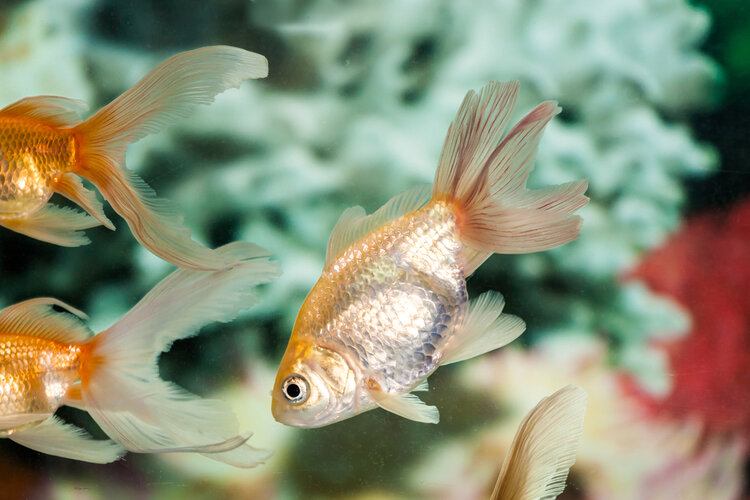How to Tell the Gender of a Goldfish: Top 5 Methods to Sex Your Fish

Updated on
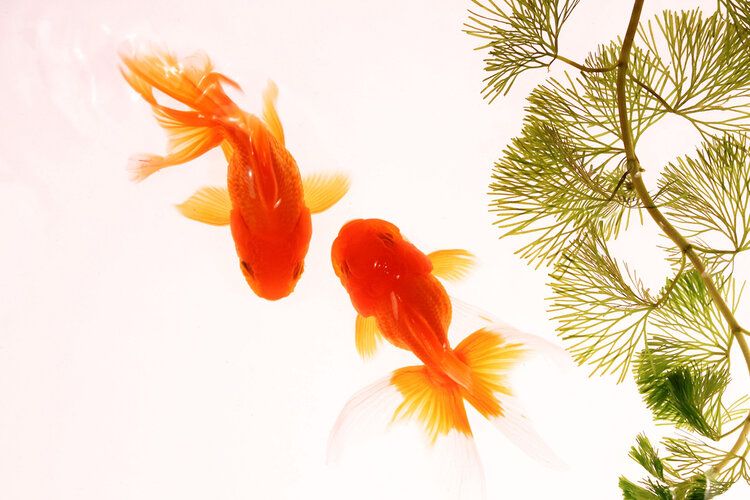
Want to know if your goldfish is a male or a female? You’ve come to the right place! Whether you’re naming a new fish or want to get into the hobby of breeding them, knowing how to tell the gender of your goldfish is a skill you’ll want to have under your belt.
WARNING: None of these methods below will work if your fish isn’t old enough.
So, when does a fish reach maturity? For most, it is around a year of age, sometimes as early as 9 months. If you got your fish from a pet store it can be difficult to know when your fish’s birthday was (unless you can use a microscope to count the rings on their scales), so you might have to keep a lookout for the signs of maturity to arrive if your fish is still pretty small.
Ready to get started? Read On!
When It’s Best to Tell a Goldfish’s Gender: Breeding Season

Even experienced breeders can have trouble telling the gender differences between a boy or girl goldfish if the fish isn’t in the breeding season. But if you know what to look for (and you catch your fish at the right time), it can be a cinch.
Goldfish typically come into breeding season after a period of cold weather followed by warmer temperatures and more abundant food. This happens very commonly in the pond environment. This “triggers” their reproductive stage and is the prime time to spot a male or a female using the clues below.
How to Tell the Gender of Your Goldfish
1. Check for breeding stars on gills, body, and fins
One of the easiest ways to know if your fish is a male or a female is pretty straightforward:
Look on the fish’s gill plates for the presence of tiny white dots, called “breeding tubercles” (sometimes also known as “breeding stars”). These little dots look like little grains of salt and are rough to the touch, like sandpaper. Breeding tubercles will also commonly show up on the front rays of the pectoral (front) fins of the fish as well, and even on the scales of the body.
Note: these white dots sometimes are confused with the disease ich or white spot disease. But ich is different on the body in that it shows up randomly on the body and is usually larger, whereas breeding tubercles appear in neat rows on the scales. If you see these, your fish is a male. (99% of the time anyway—very rarely, a female goldfish may have these for some unknown reason.)
What are they for? Some speculate that they are used to “push” around female goldfish during the breeding season. Others say they could be a weapon for the fish to use on other males. Just because your fish doesn’t have breeding tubercles doesn’t automatically mean it’s a female. Males don’t always show them, and sometimes they come and go depending on the environment and age.
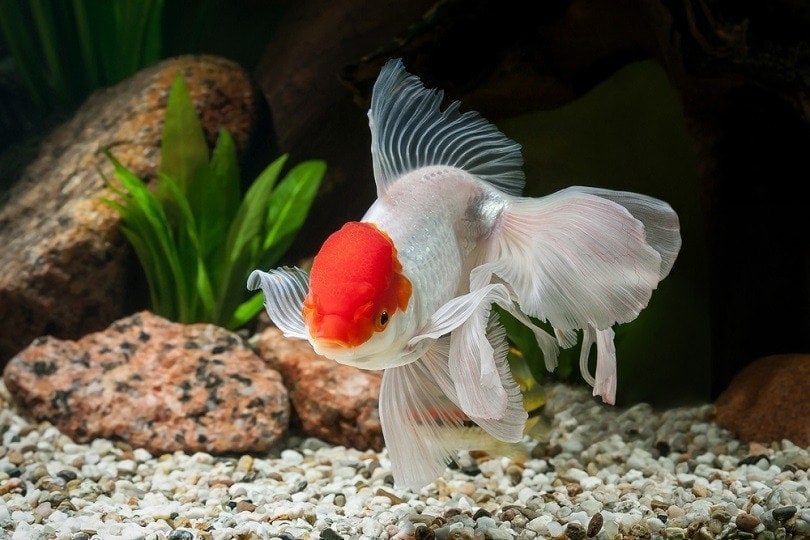
If you're new to the world of goldfish or are an experienced goldfish keeper that loves to learn more, we recommend you check out our best-selling book, The Truth About Goldfish, on Amazon. From diagnosing illnesses and providing correct treatments to ensuring your goldies are happy with their setup and your maintenance, this book brings our blog to life in color and will help you to be the best goldfishkeeper you can be.
2. Examine the vent shape of the fish
The vent is the part of the goldfish that releases their waste (as well as eggs or milt). It is located underneath the anal fin(s) of the fish which are below the tail. Females have a round “outie” that can be best seen when you look at the fish from the side. It is a small whitish protrusion that shows up when the female is close to spawning season.
Males have an oblong “innie” that is usually longer than the females, as well as more indented. Judging by vent shape can be pretty tricky unless you are really familiar with telling goldfish gender.
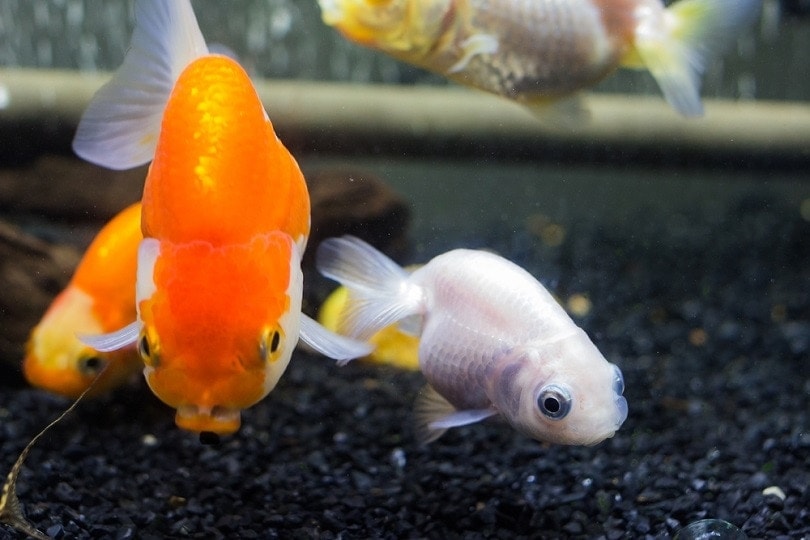
3. Study the body conformation
There is another way to tell if your fish is male or female, and that is by the shape of its body. This is probably even trickier than the vent method because of everyone’s different feeding habits. It’s probably a good idea not to rely completely on this one way when sexing fish and take the other factors into account too. Also, if the fish is a Pearlscale, it probably won’t be easy to tell either. It is best to use this tactic when viewing the fish from above.
Females usually look shorter and rounder in their abdomen area. As they come closer to the breeding season they can become very plump, swelling with eggs, like a dumpling. Their bodies are usually deeper as well when viewed from the side. This is called “gravid.” Sometimes they may even look “lopsided,” with one side of the body bulging out more than the other.
Note: a really swollen belly on a goldfish can also be a sign of illness like a bacterial infection, so if the fish looks very swollen and not just pleasantly plump, make sure everything is okay. The swollen female fish might also be egg-bound, which happens when the fish produces a lot of eggs that continue to build up inside the abdomen and cause bulging.
Males on the other hand will often look thinner and longer in the abdomen. Some males may also have a “seam” or a “ridge” along the underside of their belly.
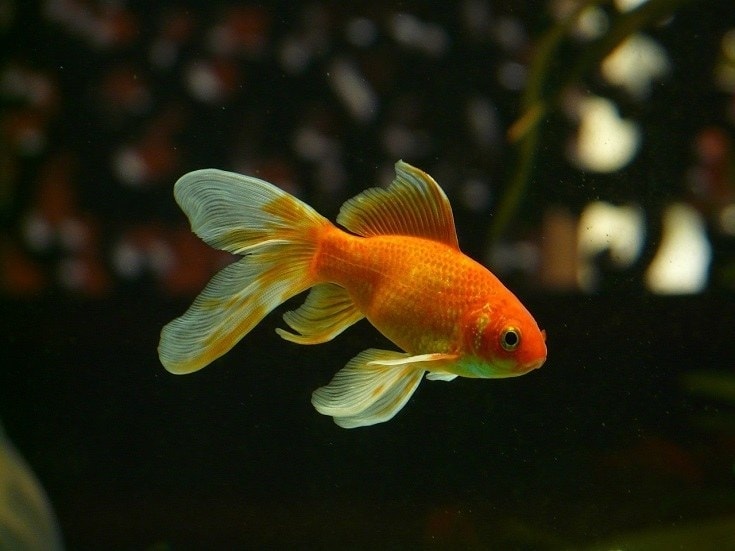
4. Look at the shape and length of the front fins
The front fins of a male goldfish are often longer and thinner than females, which usually have shorter front fins with thicker leading rays. Of course, if the fish is a long-finned variety such as a Veiltail, this method may be pretty much impossible to use because their fins are so genetically enhanced.
This is probably one of the trickier ways of determining gender, but it can work very well if you have a group of mature goldfish that are all the same breed.
5. Watch the fish for signs of mating behavior
The most obvious way to tell a male from a female goldfish is to observe the spawning process in action. Males will be the “chasers,” following closely underneath the belly or behind the females, nudging them and sometimes pushing them into objects or plants in the tank or pond. Females will be on the run and sometimes might get tired or have torn fins from the rigorous process.
This is the only 100% reliable way of sexing your goldfish but your goldfish will have to be in the height of breeding season.
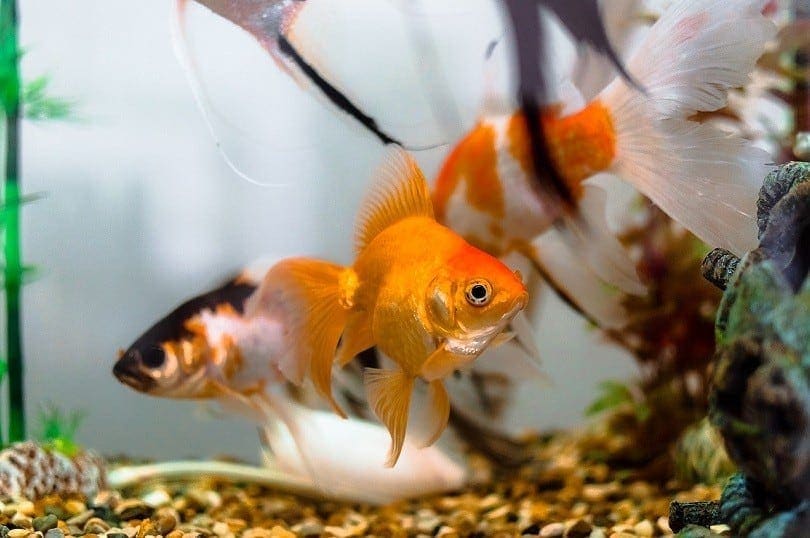
Wrapping Up
Now that you know how to tell the sex of your goldfish, is your goldfish a male or a female? Hopefully, our tips above have helped you learn to tell the difference. Remember, your fish must be 9–12 months old for the methods above to work.
See Also:
Featured Image Credit: Arunee H, Shutterstock



